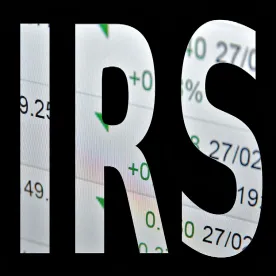|
The Coronavirus Aid, Relief, and Economic Security Act (CARES Act) temporarily allows taxpayers to carry back net operating loss (NOLs) arising in 2018, 2019, or 2020 for up to five years, unless the taxpayer elects to forgo the carryback. The IRS issued guidance in the form of a revenue procedure (Rev. Proc. 2020-24) to provide the following:
- How to waive the carryback for NOLs arising in a tax year beginning after Dec. 31, 2017, and before Jan. 1, 2021.
- How to exclude from the carryback period a taxable year in which the taxpayer has a transition toll tax inclusion under Section 965(a) (a Section 965 year).
- How to waive a carryback period, reduce a carryback period, or revoke any election to waive a carryback period for a taxable year that began before Jan. 1, 2018, and ended after Dec. 31, 2017.
The IRS also issued Notice 2020-26, which extends the deadline for the application under Section 6411 (tentative carryback and refund adjustments) for a quick refund of taxes from the carryback of an NOL that arose in any tax year that began in 2018 and ended on or before June 30, 2019.
Specific Provisions of the IRS Guidance on NOLs
Rev. Proc 2020-24
Under the CARES Act, the five-year carryback of NOLs arising in taxable years beginning in 2018, 2019, or 2020 is automatic, unless the taxpayer makes an irrevocable election to forgo the carryback for one or more such taxable years, effectively electing to carry forward such NOLs. Rev. Proc. 2020-24 provides that an irrevocable election to waive the carryback period arising in a taxable year beginning in 2018 or 2019 must be made no later than the due date, including extensions, for filing the taxpayer’s federal income tax return for the first taxable year ending after March 27, 2020. The ability to carry back NOLs to pre-2018 taxable years may provide additional liquidity, as the corporate tax rate in those years was 35% (instead of the current 21% under the Tax Cuts and Jobs Act of 2017).
Further, Rev. Proc. 2020-24 also explains how a taxpayer may elect to exclude all Section 965 years from the carryback period for an NOL arising in a taxable year beginning in 2018, 2019, or 2020. Rev. Proc. 2020-24 provides that an irrevocable election to exclude Section 965 years from the carryback of NOLs arising in a taxable year beginning in 2018 or 2019 must be made no later than the due date, including extensions, for filing the taxpayer’s federal income tax return for the first taxable year ending after March 27, 2020. For NOLs that arise in a taxable year beginning in 2020, the election must be made by no later than the due date, including extensions, for filing the taxpayer’s federal income tax return for such taxable year. The election is generally made by attaching a statement to the earliest of:
(i) The federal income tax return filed for the taxable year in which the NOL arises;
(ii) The taxpayer’s claim for a quick refund filed under Section 6411 with respect to NOLs in the carryback period; or
(iii) The amended federal income tax return filed for the earliest taxable year in the NOL carryback period that is not a Section 965 year.
The election to exclude Section 965 years would enable taxpayers to disregard some amounts of foreign income subject to the transition tax when applying NOL to the five-year carryback period, which without the election would have been included as income during the carryback period. Under the election, a taxpayer can disregard all Section 965 years and determine whether the taxpayer can receive a refund or credit for the remaining years within the five-year carryback period. If the taxpayer does not make an election to exclude Section 965 years from the carryback period, the taxpayer would be deemed as having made the Section 965(n) election such that the taxpayer cannot use the NOLs to offset the transition tax.
Rev. Proc. 2020-24 further provides guidance to waive any carryback period, reduce a carryback period, or revoke any election to waive a carryback period for a taxable year that began before Jan. 1, 2018, and ended after Dec. 31, 2017.
For taxpayers with an NOL arising in taxable years beginning before Jan. 1, 2018, and ending after Dec. 31, 2017, they may make an application under Section 6411(a) on either Form 1045 (for individual taxpayers) or Form 1139 (for corporate taxpayers) for a quick refund of taxes with respect to a carryback of such NOL, as further explained below. The application will be treated as having been timely filed if it is filed no later than July 27, 2020. Similarly, elections for such taxable years with an NOL to waive any carryback period, to reduce any carryback period, or to revoke an election made under Section 172(b) to waive any carryback period will be treated as timely filed if filed no later than July 27, 2020.
Notice 2020-26
Notice 2020-26 provides additional guidance for procedures on how to file applications under Section 6411(a) for taxable years beginning after Dec. 31, 2017. Under Section 6411, taxpayers may apply for a quick refund from the carryback of an NOL by filing Form 1045 (for individual taxpayers) or Form 1139 (for corporate taxpayers). Upon filing Form 1045 or Form 1139, as applicable, the IRS is required (after verifying the application) to issue a refund by the later of the 90 days from (i) the date on which Form 1045 or Form 1139 is filed or (ii) the last of the month of the due date of filing the return for the NOL carryback year.
To obtain a quick refund, Form 1139 or Form 1045, as applicable, must generally be filed during the period beginning on the date of filing the return for the NOL taxable year and ending on the date 12 months from the last day of such taxable year. Thus, for the calendar year 2018, the deadline for the quick refund application under Section 6411 was Dec. 31, 2019. The CARES Act did not provide any additional time to file Form 1045 or Form 1139 for NOLs arising in taxable years beginning after Jan. 1, 2018, even though the deadline to file those applications had expired. Notice 2020-26 has granted a six-month filing extension for a tentative carryback adjustment under Section 6411 with respect to the carryback of an NOL that arose in any taxable year beginning in 2018 and ended on or before June 30, 2019. Thus, for NOLs arising in 2018, taxpayers have until June 30, 2020, to file an application under Section 6411 for a quick refund.
The IRS has also updated its frequently asked questions (FAQs) regarding Form 1139 and Form 1045 to claim quick refunds of the NOL deductions. Specifically, the IRS temporarily allowed taxpayers to submit these forms via fax instead of physical copies. The IRS clarified that all claims will be processed in the order of receipt. The IRS also explained that if a taxpayer has fully paid the transition tax under Section 965, the taxpayer may use Form 1139 or Form 1045, as applicable, to apply for a refund for the Section 965 year. The taxpayer may disregard the instructions for Form 1045 and Form 1139 that prohibit taxpayers from using these forms to apply for refunds for the Section 965 years.
|




 />i
/>i

